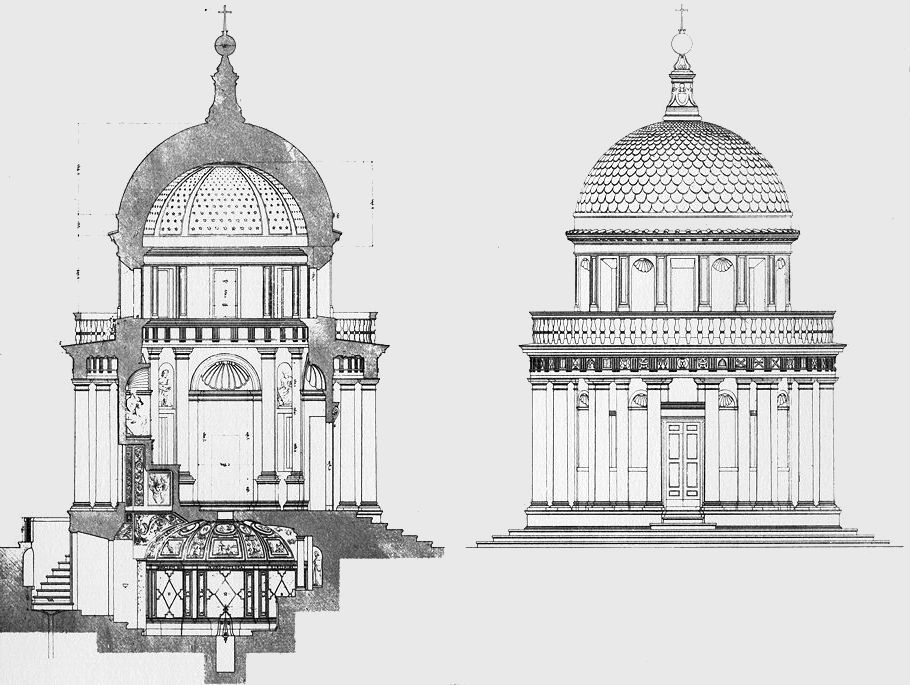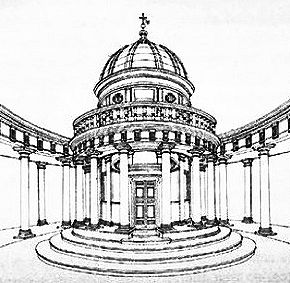3.3.13 These proportionate enlargements are made in the thickness of columns on account of the different heights to which the eye has to climb. For the eye is always in search of beauty, and if we do not gratify its desire for pleasure by a proportionate enlargement in these measures, and thus make compensation for ocular deception, a clumsy and awkward appearance will be presented to the beholder.
Vitruvius
By his acceptance of these principles, Bramante indicates a new concept of the relationship between the model and the work of art that was responsible for his achievements in Rome. The abrupt change in style that occurs between Bramante's work in Milan and in Rome, for example, is only explicable in terms of this attitude. ... If Bramante seems to become the Renaissance architect who produces the purest classical building since the time of the ancients, it is because his attitude toward his model-Northern or Roman-was to reproduce its appearance by recreating what he felt to be its visual effect. And the means by which the image would be conveyed became increasingly those of the painter or sculptor. Contrasts between light and dark, or between the tactile sensation of different surfaces, are the effects Bramante desired to create...
Bates Lowry, Renaissaance Architecture (New York: George Braziller, 1965), pp. 39-40.
The fully developed central-plan church demands an altar in the center of the main space. If the altar is pushed against the wall, as in Bramante’s Tempietto, the meaning and form of the space do not exactly coincide. In the Tempietto the focus is on the spot where Peter suffered martyrdom; thus the circular latticed opening in the floor. Which provided a view into the crypt, is also a spiritual center.
Paul Frankl, Principles of Architectural History: The Four Phases of Architectural Style, 1420-1900 (Cambridge, MA: The MIT Press, 1968, p.162.
| |

| |

A cylindrical central-plan building like Bramante’s Tempietto in S. Pietro in Montorio in Rome looks the same from every side. Although the overlap of the freestanding columns of its peristyle shifts with every step we take, this shift is such that the same relationships always return at regular intervals. Only the background changes, and even this change would have been eliminated by the proposed circular court and its surrounding colonnade. The eye takes in the situation at a glance. The image—the architectural image—is complete from all viewpoints. There is no temptation for us to walk around the building because we realize at once that it can offer us no surprises.
Paul Frankl, Principles of Architectural History: The Four Phases of Architectural Style, 1420-1900< (Cambridge, MA: The MIT Press, 1968, p.144.
|

